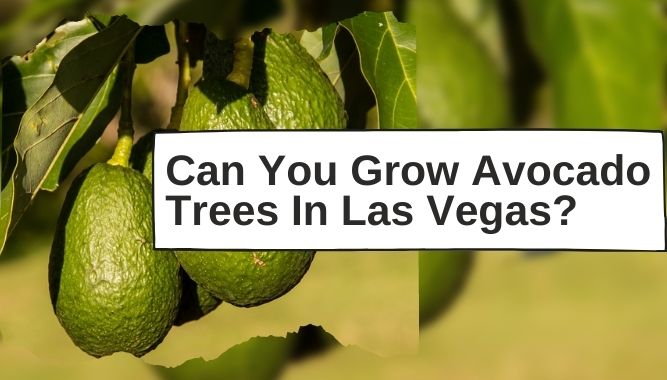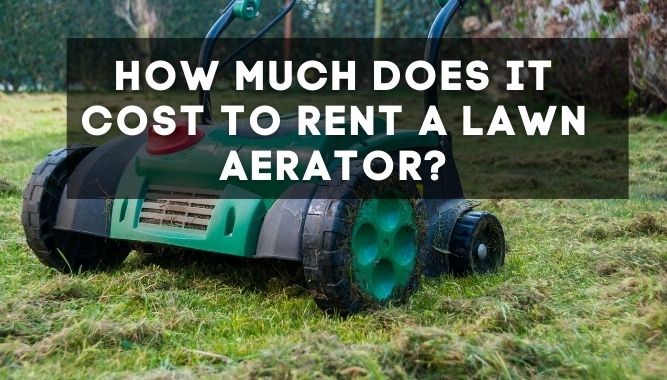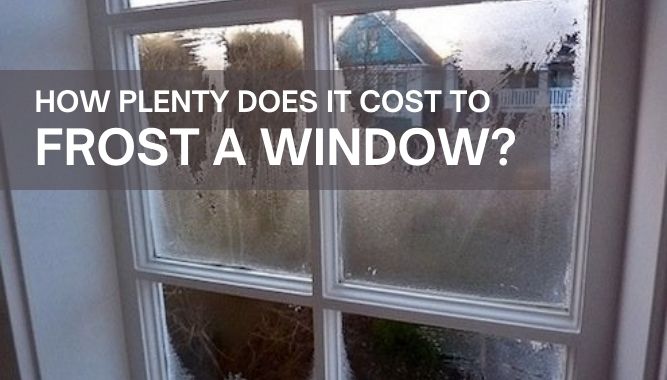There is much interest in cultivating avocados within the Las Vegas Valley.
As you’re likely aware, the avocado is “iffy” when it comes to conditions like the Las Vegas climate, perhaps a little less bad than citrus in terms of being able to endure winter temperatures.
It all depends on the variety of avocado you’re cultivating.
In that case, please place it in a secure location free of extreme cold in the coldest period of the coming winter.
It’s fine when temperatures are close to 32 ° F or below; however, you should protect yourself at below temperatures.
Can You Grow Avocado Trees In Las Vegas?
Yes, you can grow certain varieties of avocados in Las Vegas, NV, provided you give them adequate care and protect them from pests.
Not only avocados but people are also growing tropical fruits like pineapple and plums, which grow well.
LV growing requirements for an Avocado:
Avocados are subtropical trees understory adapted to warm weather and humid climates.
- They are only found within US Department of Agriculture zones 8 to 11. However, they don’t thrive in these zones.
- Areas that experience extreme heat, frost, cold winds, or snow in winter aren’t avocado-friendly zones.
- The trees typically require moderate temperatures throughout the year, but certain varieties are more tolerant of cold than others.
Avocado trees must be watered regularly for the plant to flourish and produce fruits.
If the plant is experiencing dry conditions, fruit production may decline.
- The trees don’t need excessive pruning.
- Just trim the dead and dying trees. Utilize a good quality pruner to cut cleanly. Pruners are available in Amazon, Home Depot, Walmart, and many other stores.
Avocado trees are classified into three main groups: West Indian, Guatemalan, and Mexican.
- The ideal growth area for each is different for each type. Avocados from the West Indies thrive in warm climates.
- Mexican avocados are native to tropical regions, are the coldest resilient, and can endure temperatures as low as 26,500 degrees F.
- They’re also the smallest, with fewer than 1 pound. Other types of fruits can weigh as much as 5 pounds.
- The fruits produced by these varieties are also different.
- Mexican varieties of avocados are small and have smooth, papery skins.
- Guatemalan avocado skins are tough and filled with warts.
- Avocados from the West Indies are shiny and have thin skin.
The US & Global Avocado Guide:
US Avocado Growing Regions –
Avocados are commercially grown in areas in Florida, California, and Hawaii.
- Many of them are planted on the coast of Miami-Dade County and Collier County in Florida.
- In California, the region between San Luis Obispo and San Diego is called avocado country.
- One of the names for San Diego County is Avocado Country.
- More than 200 varieties of avocado are grown in Hawaii and include trees that produce some of the biggest avocados in the world.
- More than half of the commercial avocados grown from Hawaii are cultivars called ‘Sharwil.’
- It is an equilateral cross of Mexican as well as Guatemalan varieties.
- The fruit is green at maturity and weighs up to 20 pounds.
- Experts disagree on what Sarwils compared to smaller avocados grown in the mainland.
World Avocado Growing Regions –
- One important piece of data to note is that the US does not hold the sole right to cultivate avocados.
- Other countries have a greater number of avocado trees than the United States.
- Most avocados are grown throughout Mexico as well as within the Dominican Republic.
- Mexico’s commercial production spans approximately 410,000 acres and is found predominantly within the state, including Puebla, Morelos, Michoacan, Nayarit, and Mexico.
PS – The Dominican Republic comes in second in the production of avocados.
Other countries that produce avocados comprise Peru, Colombia, and Indonesia.
Common pests of avocado in the USA & their Counter-measures techniques:
From mites to pests, seeing for these is important to protect your lovely avocados in the USA –
- Persea mites infest avocado trees, mostly in California.
- The mites come with eight legs, and they have an oval shape.
- Certain mites, including an avocado brown and a six-spotted mite, may destroy avocado trees.
- Mites are active most of the summer and spring months.
- Phytophthora root Rot is a significant reason for most issues that avocado trees must face.
- Root rot can develop in areas with excessively wet soil and poor drainage.
The effects on Common Avocado Pests –
- Avocado trees that show root rot symptoms may show swollen foliage and fallen leaves.
- The tiny roots affected by the fungus appear fragile, breakable, and dark in color.
- Webbed veins may appear on damaged leaves before they disappear.
Controlling Mites on Avocados –
- Natural methods are commonly used to manage the population of spider mites because insects and other mites are predators.
- Lady beetles and six-spotted thrips, and various hungry mites are all eager to devour your insects.
- Another way of eliminating the spider mites that cause problems is spraying the avocado plant’s affected areas using Miticide.
- Eliminating dust from the roads around the trees helps reduce the number of mites in the avocado.
- And you can achieve this by paving or oiling the roads that lead to and between the orchards.
- Another method to control road dust is to wash the dirt using water trucks.
- Misting your avocado trees in the garden can lower the chance of suffering from mites.
Treating Avocado Root Rot –
- Start with the nursery to decrease the risk of the avocado tree getting affected by root decay.
- Root rot can spread within tree and plant nursery stores. Select disease-resistant avocados.
Some other questions,
Related Questions and Frequently Asked Questions (FAQ):
Q1.) What are some famous fruit trees in Las Vegas, NV, that grow well?
Answer: We can find a variety of fruit trees like apricots, plums, and peaches due to the dry and hot weather conditions of LV, Nevada.
Q2.) Is it possible to grow a tree right in the middle of a desert?
Answer: Yes, and the avocado tree grows easily in the desert!
Just water them properly and protect them from pests.
Q3.) How long can an avocado tree take to bear the fruits?
Answer: When it comes to seeing the avocado fruits, be patient and expect to see the fruits coming in about three to four years after planting.
Q4.) Do an individual need two avocados type for producing fruit?
Answer: Remember that to get the best yield of fruit, at least two avocado trees are a bare minimum, and for best pollination results, we must make sure that type A and type B grow together.
Q5.) Is it possible to grow lemon trees in Nevada?
Answer: It is difficult to grow any citrus fruits in Nevada because of the cold winters. Begin with healthy soil as a foundation to grow lemon and grapefruits.
Q6.) Is it possible to grow pineapples in LV?
Answer: Yes, it is possible to grow pineapples and mangoes because they are tropical fruits and grow well under sunlight. Just avoid planting them where a shade is there.
Q7.) How well do avocadoes grow in a tropical climate?
Answer: Avocados can thrive well in a true topical condition depending on the race/ varieties.
They need some humidity across the season.
Q8.) What is the way of growing avocados indoors?
Answer: Yes, many dwarf varieties can also grow in cold and temperate regions.
Q9.) How much can the avocadoes tolerate?
Answer: We must understand that a well-grown avocado tree can tolerate extreme heat levels and Mexican varieties top in this game.
Q10.) How hard is it to grow avocadoes?
Answer: We know that avocadoes are a very healthy treat but a lot more difficult to grow in the United States due to cold weather, but they grow a lot easier in tropical climates.
Q11.) What kind of Las Vegas temperatures can allow avocadoes to thrive?
Answer: When it comes to the Hass avocadoes, they need just three basic things viz, a Bright, Direct, and Unfiltered sunlight and slight shades.
Q12.) How much does the avocado tree cost?
Answer: An avocado tree costs from $60 onwards, a five-gallon avocado can cost upward of $36 easily from a retail store, and $130 for a fifteen-gallon.
Q13.) Can a single avocado produce fruit on its own?
Answer: One reason the avocado tree does not produce any fruit is it lacks the grafting variety, and for technical persons, Avocados are protogynous dichogamy.
The last phrase means they have both the male and female elements.
Q14.) Can we plant just a single avocado tree in California?
Answer: A single avocado has very little opportunity for its flowers to pollinate. And this is true, especially in California’s climatic conditions.
Q15.) Will figs grow in Las Vegas, NV?
Answer: Yes, most figs are self-fertile and do well in most Las Vegas valleys.
So, you can easily grow them.
Q16.) How to grow tomatoes in Las Vegas?
Answer: Because of the hot weather there, LV shows a short growing season for all kinds of tomatoes, so kindly select the short varieties.
Q17.) Can we grow papayas in LV?
Answer: Yes, varieties of papayas like Hawaiian Solo grow well over there and are more productive.
Most can start bearing fruits within nine months in the mild climate area.
Q18.) What are some typical plant species growing in Las Vegas?
Answer: Some native species are Dwarf Oleander, Lilly Turf, Nandina, or Honeysuckle Vine.
Deer grass and Germander border plant are common too.
Q19.) Which US states should grow avocado?
Answer: Florida, California, and Hawaii are the only states where avocadoes grow well.
And, of the 200 varieties, over 50% comes from these states only.
Q20.) How much irrigation does the avocado plant need?
Answer: Most avocado plants need about two inches of rainfall/ irrigation each week during the summers and moderate biofertilizers.
Final Verdict:
For someone looking to plant their avocado trees, you must have sunlight in the morning and afternoon shade to endure.
The most efficient method to let your tree go to seed is by planting it under full sunlight at the edge of the desert.
And This means that you’ll have put your avocado on the west of the property you own, preferably in the shade of a larger tree.
So, the avocado tree gets the sun’s rays in the morning and receives afternoon shade and diffused light from the bigger tree. It’s going to work wonderfully.
What do you think of shade cloth?
If that’s the only option available, it is possible to aim to locate a place on your property that offers that morning sun and afternoon shade!
Thanks For Reading!





